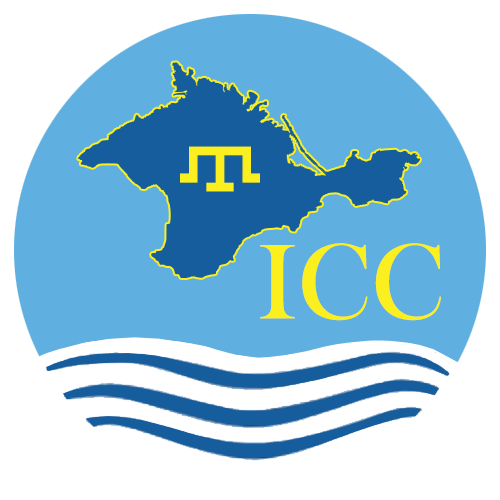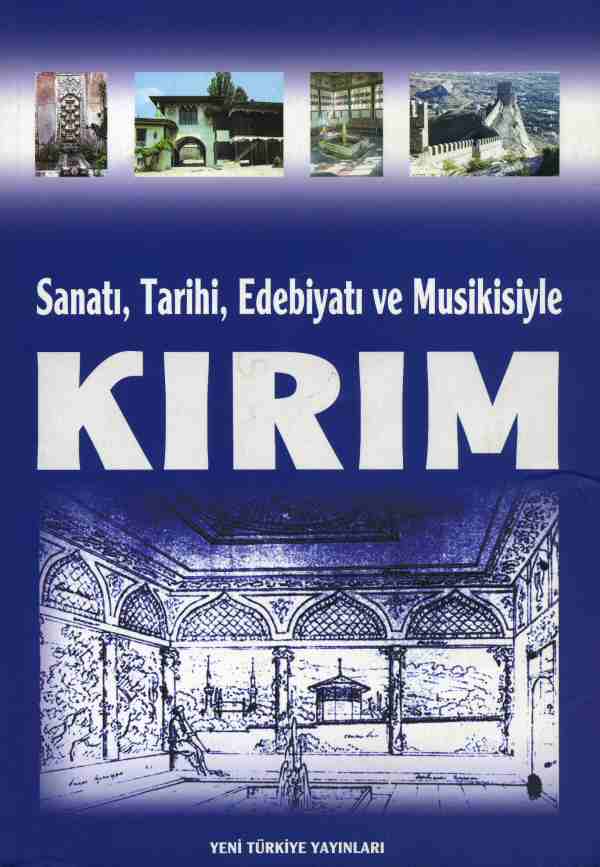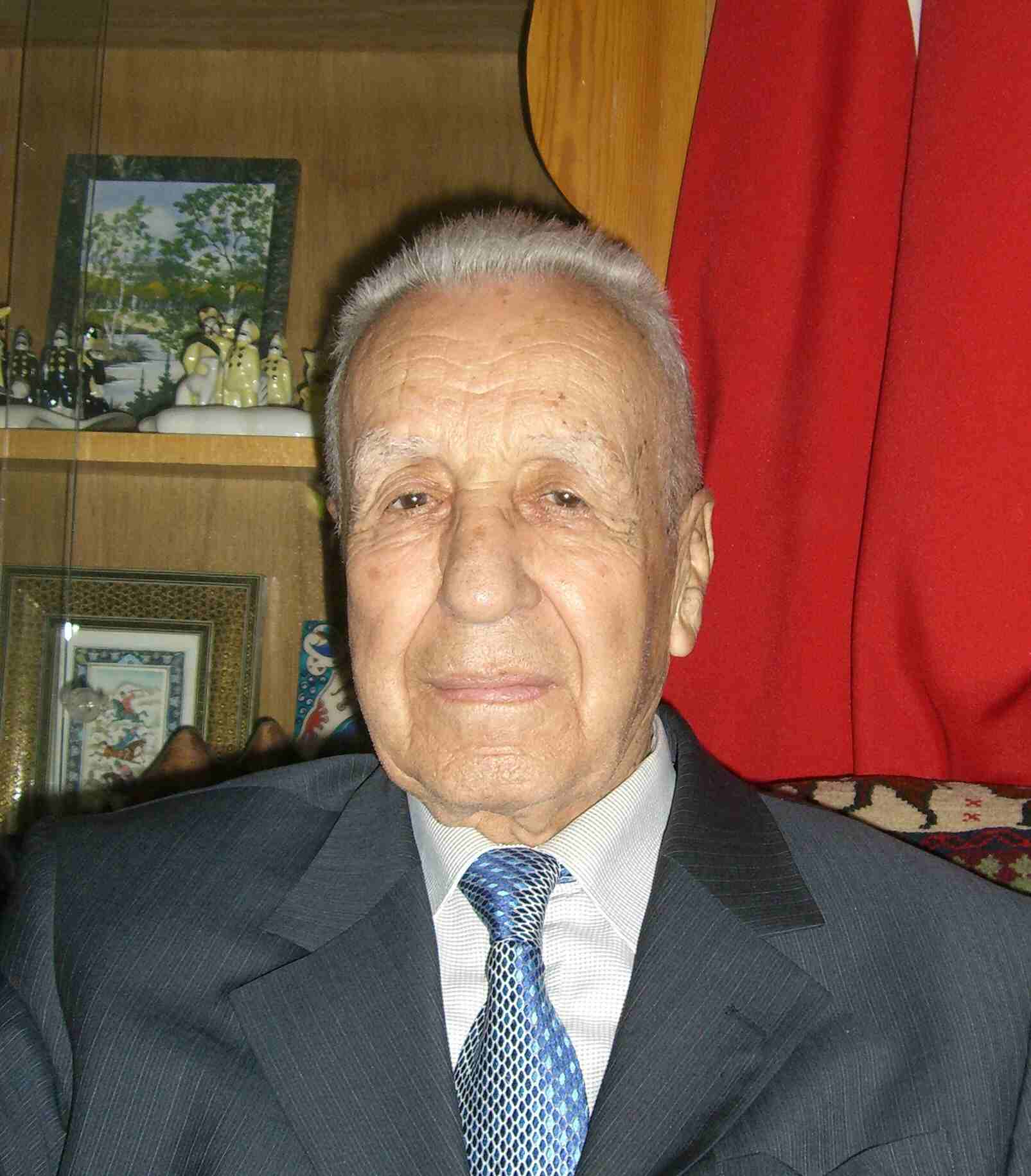
International Committee for Crimea
Cultural History of Crimean Tatars:
A Book Review and a Tribute
Oktay Aslanapa, ed. Sanatı, Tarihi, Edebiyatı ve Musikisiyle KIRIM [Crimea: Her Art, History, Literature and Music]. Ankara: Yeni Turkiye Yayinlari, 2003. 260 pp.
KIRIM is a collection of articles written by Turkish scholars and researchers on the cultural history of Crimean Tatars. It includes chapters on architecture, history, literature and music, and brings together information drawn from sources in Turkish, Crimean Tatar and Russian, often not readily available in English. The volume was edited by Professor Oktay Aslanapa, the eminent historian of Turkish art.

|
In 1979, Oktay Aslanapa published a monograph on the Turkic architecture of Crimea and Northern Azerbaijan (Kırım ve Kuzey Azerbaycan'da Türk Eserleri), covering structures such as mosques, mausoleums, palaces, castles and medreses (Islamic schools of higher learning). This publication remained a major source of information on the extant monuments in the region. More than two decades passed and there was still no single publication that treated other dimensions of Crimean Tatar culture. This realization led Professor Aslanapa to persuade other scholars and experts to write chapters on cultural history of the Turkic population of Crimea and to produce this volume.
The first chapter of KIRIM describes the extant monuments in Crimea and is a reprinting of the section from Aslanapa's earlier publication. It covers the Özbek Khan Mosque and Medrese in Solhat or Eski Qirim (Stary Qirim), the Palace of the Khans and mausoleums in Bahçesaray and nearby Salacik, Khan's Mosque in Gözleve (Yevpatoriya), and other ruins in Mangup and Kefe (Feodosia). It is illustrated with photographs and architectural drawings. The chapter also includes a list of religious and other public structures in Crimea that are no-longer extant. This list, compiled from historical sources (mostly accounts of Evliya Çelebi, a seventeenth-century Ottoman traveller), would be very helpful in determining what has been demolished or disappeared during the last three hundred years.
The text of Aslanapa's chapter on Crimean architecture, "Kırım'da Türk Eserleri," is available online (without illustrations) at the Web site of the Emel Foundation (Istanbul).[1] The text has not been translated into English; however, Aslanapa's work partly formed the basis of my online presentation, "Crimean Tatar Architecture" (1998), published at the Web site of the International Committee for Crimea, and illustrated with my own digital photographs.[2]
More detailed descriptions of several well-known Crimean Tatar historic structures with numerous images are presented by ArchNet,[3] an Internet project administered by the Massachusetts Institute of Technology (MIT) School of Architecture and Planning. Supported by the Aga Khan Trust for Culture, the project aims to provide quality and globally accessible images, accompanied by descriptions of historic sites. For the country Ukraine, three cities in Crimea are included: Yevpatoriya (Gözleve), Bahçesaray and Solhat. Professor Aslanapa's monograph on Crimean architecture also served as a useful source for the ArchNet project and remains a classic work in the field.
The remaining chapters of KIRIM are devoted to the history of Crimean Khanate written by Giray Saynur Altug (now Bozkurt) of Sakarya University; contributions of Crimean intellectuals in Turkey by the well-known Ottoman historian Ilber Ortaylı, now Director of the Topkapı Palace; Crimean War by Mahir Aydın of Istanbul University; Crimean Turkic literature by Orhan Söylemez of Marmara University; and Crimean Tatar music by Etem Ruhi Üngör.[4] While each of the chapters deserves a separate summary, I will briefly focus on the chapters on literature and music because these are areas that are an integral part of a group's cultural identity.
The chapter written by Orhan Söylemez, an associate professor of Turkic literature, is divided into four sections: Classical or Palace Literature, Folk Literature, Religious Literature and Modern Literature. Under Classical Literature, he includes examples of poetry written by Crimean Khans or members of the Giray family. Crimean Tatars had a rich tradition of folk literature, embodying a variety of forms that are also inherent in the folklore of other Turkic peoples: epics (destan), tales (masal), fables (efsane) proverbs (atasözü) , riddles (tapmaca), anectodes (fıkra), wailing (ağıt) and forms of folk singing (çın, mani). Professor Söylemez's excellent discussion of folk literature is illustrated with numerous examples and summaries of famous epics such as Edige Destanı, Çora Batır Destanı and the Fable of Arzı Kız. The publication of Ismail Bey Gaspıralı's Tercüman in 1883 marked the beginning of modern period in the literary history of Crimea. Gaspıralı himself produced literary works besides his famous newspaper and articles on the modernization of Russia's Muslim Turkic populations. The early part of the 20th century might have been the golden age of Crimean Tatar literature. Şamil Toktargazi (1881-1913), Numan Çelebi Cihan (1885-1918), Mehmet Nuzhet (1888-1933) Omer Ipçi (1897-1944), Abdullah Latifzade (1894-1938), Mehmet Niyazi (1878-1931), Hamdi Giraybay (1901-1930), Bekir Sıtkı Çobanzade (1893-1937), Cafer Seydahmet Kırımer (1889-1960) and Şevki Bektöre (1888-1961) are among the talented poets and writers of Crimea included in Orhan Söylemez's survey.[5]
The chapter on the music of Crimean Tatars, written by the ethnomusicologist E. R. Üngör presents the topics under the following headings: classical music; folk music, religious music, marches, musical instruments and publications. We learn, for example, that Crimean Khan Gazi Giray (1554-1607), is a well known composer of the classical period. He composed for the string instrument saz (long-necked lute) and also played the tanbur (another string instrument). Üngör's valuable survey incorporates many examples of lyrics and scores of folk songs, including the popular song "Boztorgay." The author also cites several sources in Russian and reviews a rare publication on Crimean Tatar songs, Kirim Tatar Yırları, published by Asan Refat in 1932 in Crimea. A lengthy quotation from Refat's Introduction is also included.
A Tribute to Professor Oktay Aslanapa
We are indeed grateful to Oktay Aslanapa for having turned his attention to Crimea and assembled a group of experts to produce this valuable book on the cultural history of Crimean Tatars: Sanatı, Tarihi, Edebiyatı ve Musikisiyle KIRIM. Without his interest, support and authority, this book would not have been published.

|
Oktay Aslanapa in May 2007 |
Considered the dean of Turkish art historians, Oktay Aslanapa was associated with the University of Istanbul Faculty of Letters for more than forty years. He was born in 1914 in Kütahya, a historic city in western Anatolia known for its tiles and ceramics. After completing his early education in his home town and later in Bursa, he attended the University of Istanbul, graduating in 1938. He won a scholarship to pursue his doctoral studies in Germany but World War II interrupted his graduate work. He nevertheless received his Ph.D. from the University of Vienna in 1943 and subsequently appointed Assistant Professor in the newly established Department of Art History. He served as Chair of this Department from 1960 to 1983, when he retired. However, he remained active in the field, continuing to publish books and articles on different aspects of Turkish art. He has published thirty books and over 150 articles in Turkish, German and English, including Turkish Art and Architecture (New York, 1972) and One Thousand Years of Turkish Carpets (Istanbul, 1988). He is also an authority on Turkish tiles and ceramics. During his long career at the University of Istanbul, he supervised over seven hundred theses at the bachelor, master's and doctoral levels. The Turkish academic community honored him in 1996 by issuing a Festschrift volume, Aslanapa Armağanı, that includes an introductory chapter on his life and career, and twenty other chapters on various aspects of Turkish art written by experts in respective fields.
At the age of 93, Oktay Aslanapa remains mentally and physically active. He is a frequent visitor at the Türk Dünyası Araştırmaları Vakfı (Turkic World Research Foundation) in Istanbul, where I had an opportunity to talk with him last May. He is cordial, supportive, reserved yet approachable, and of course erudite.
With gratitude and best wishes,
Inci Bowman
September 2007
NOTES
[1] Oktay Aslanapa's "Kırım'da Türk Eserleri," was reprinted in Emel No. 135, 1983, pp. 25-45.
http://www.ismailgaspirali.org/yazi.asp?yazi_no=113505
[2] Inci Bowman, "Crimean Tatar Architecture," 1998.
http://www.iccrimea.org/monuments/monuments.html
[3] http://archnet.org/library/places/places.jsp?country_code=ua&collection_type=historical
[4] The Contents page of the book has been posted (in Turkish) to the Web site of Yeni Türkiye Research and Publications Center:
http://www.yeniturkiye.com/display.asp?c=1211#x
As an example, the text of Ilber Ortayli's article, "Türkiye'de Kırımlı Aydınlar," is also available online:
http://www.yeniturkiye.com/display.asp?c=1212#x
Please note that the book can be purchased at this Web site.
[5] Biographical information on some of these literary figures and examples from their works are found at the Web site of the International Committee for Crimea. See, for example: "Crimean Tatar Literature" and "Historic Sources and Personalities."
http://www.iccrimea.org